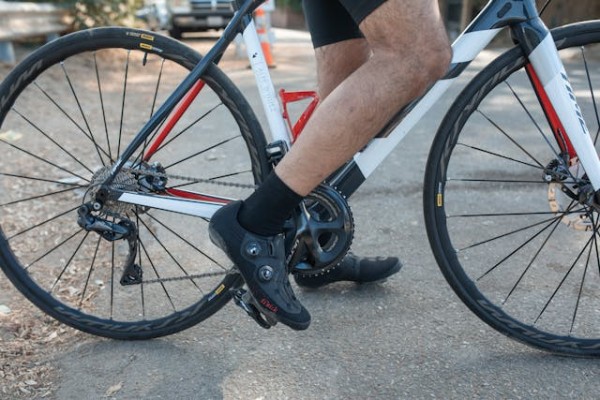As you go about your daily routine, it’s not uncommon to experience the occasional twinge or ache in your knees. But what if those fleeting moments of discomfort become a constant presence in your life, hindering your ability to walk, run, or even stand?
Well, my friend, you’re in luck. In this discussion, we will unveil the secrets to knocking out knee pain for good, allowing you to reclaim your mobility and live a pain-free life. So, buckle up and get ready to discover the game-changing strategies that will revolutionize your relationship with your knees.
5. Understanding the Causes

Understanding the causes of knee pain is essential for finding effective solutions and achieving long-term relief. One common cause of knee pain is injury. This can occur due to sports-related activities, accidents, or even simple falls. Injuries such as ligament tears, meniscus tears, or fractures can result in severe knee pain and require immediate medical attention.
Another cause of knee pain is arthritis, which is the inflammation of the joints. Osteoarthritis, the most common type of arthritis, occurs when the cartilage in the knee joint breaks down over time. This can lead to pain, stiffness, and difficulty with movement.
Additionally, overuse or repetitive strain on the knee can cause pain and discomfort. It’s important to identify the specific cause of knee pain to develop an appropriate treatment plan and prevent further damage.
4. Strengthening Exercises
If you’re looking to address knee pain and improve your overall knee health, incorporating strengthening exercises into your routine is a key step forward. Strengthening exercises help to build the muscles around your knee, providing support and stability.
One effective exercise is the squat. Start by standing with your feet shoulder-width apart and slowly lower yourself into a sitting position, keeping your knees aligned with your toes. Another exercise that targets the muscles around the knee is the leg press. This exercise involves pushing against resistance with your legs while seated or lying down.
Additionally, incorporating exercises that target the hips, such as hip abductions and hip extensions, can also help to alleviate knee pain. Remember to start slowly and gradually increase the intensity and duration of your exercises. Consulting with a physical therapist or a knowledgeable fitness professional can also guide the most effective strengthening exercises for your specific needs.
3. Effective Pain Management Techniques
Looking for effective ways to manage your knee pain? When it comes to pain management techniques, there are several strategies you can try to alleviate your discomfort and improve your quality of life. One effective technique is ice therapy. Applying ice to your knee for 15-20 minutes every few hours can help reduce inflammation and numb the area, providing temporary relief.
Another technique is heat therapy. Using a heating pad or warm towel on your knee can help relax the muscles and increase blood flow, promoting healing. Additionally, over-the-counter pain medications such as ibuprofen or acetaminophen can help alleviate pain and reduce inflammation.
It’s important to consult with your healthcare provider before starting any new pain management techniques to ensure they’re safe and appropriate for your specific condition.
2. Lifestyle Changes for Long-Term Relief
To achieve long-term relief from knee pain, implementing lifestyle changes is essential. Making certain adjustments to your daily routine can significantly reduce discomfort and improve your overall knee health. First and foremost, maintaining a healthy weight is crucial as excess pounds put unnecessary stress on your knees. Regular exercise, focusing on low-impact activities like swimming or cycling, can help strengthen the muscles around your knees and provide support.
Additionally, wearing proper footwear with adequate cushioning and support can alleviate pressure on your joints. Avoiding high-impact activities and opting for knee-friendly exercises such as yoga or tai chi can also contribute to long-term pain relief. Lastly, incorporating anti-inflammatory foods like fruits, vegetables, and omega-3-rich foods into your diet can help reduce inflammation in your knees.
1. Seeking Professional Help
One effective way to address your knee pain is by seeking professional help from a healthcare provider who specializes in orthopedics or sports medicine. These specialists have the expertise to accurately diagnose the cause of your knee pain and provide targeted treatment options.
When you consult a professional, they’ll conduct a thorough examination of your knee, which may include imaging tests like X-rays or MRI scans. Based on their findings, they can recommend appropriate treatment strategies such as physical therapy, medication, or even surgical intervention if necessary. Additionally, healthcare providers in these fields can educate you on proper knee care, including exercises to strengthen your knee and tips for preventing future injuries.
Frequently Asked Questions
Can Knee Pain Be Caused by Other Underlying Medical Conditions?
Knee pain can indeed be caused by other underlying medical conditions. It’s important to remember that the knee joint is complex and can be affected by various issues. Conditions such as arthritis, tendinitis, bursitis, and even infections can all contribute to knee pain.
Additionally, injuries like ligament tears or meniscus damage can also be responsible. If you’re experiencing persistent knee pain, it’s crucial to consult a healthcare professional who can accurately diagnose the underlying cause and provide appropriate treatment.
Are There Any Exercises That Should Be Avoided for Individuals With Knee Pain?
Certain exercises should be avoided if you have knee pain. It’s important to avoid high-impact activities like running or jumping, as they can put too much stress on your knees. Additionally, exercises that involve deep knee bends or heavy weights may also worsen your pain.
Instead, focus on low-impact exercises like swimming or cycling, and incorporate strength training exercises that target the muscles around your knees for added support.
What Are Some Alternative Pain Management Techniques for Those Who Prefer Non-Medication Options?
If you prefer non-medication options for managing knee pain, there are a variety of alternative techniques you can try. These may include physical therapy, acupuncture, massage therapy, chiropractic care, and using hot or cold packs.
Additionally, practicing low-impact exercises like swimming or cycling can help strengthen the muscles around your knee and reduce pain. It’s important to consult with a healthcare professional to determine the best approach for your specific condition.
Can Dietary Changes Play a Role in Reducing Knee Pain?
Dietary changes can indeed play a role in reducing knee pain. By incorporating anti-inflammatory foods into your meals, such as fruits, vegetables, and fatty fish, you can help combat inflammation in your body, which may alleviate knee pain. Additionally, maintaining a healthy weight through a balanced diet can help reduce stress on your knee joints.
Conclusion
By understanding the causes of knee pain, engaging in strengthening exercises, and implementing effective pain management techniques, you can knock out knee pain for good. Making lifestyle changes and seeking professional help are also important steps in managing knee pain. Remember, prevention is better than cure, so take proactive steps to protect your knees and maintain a healthy lifestyle.





